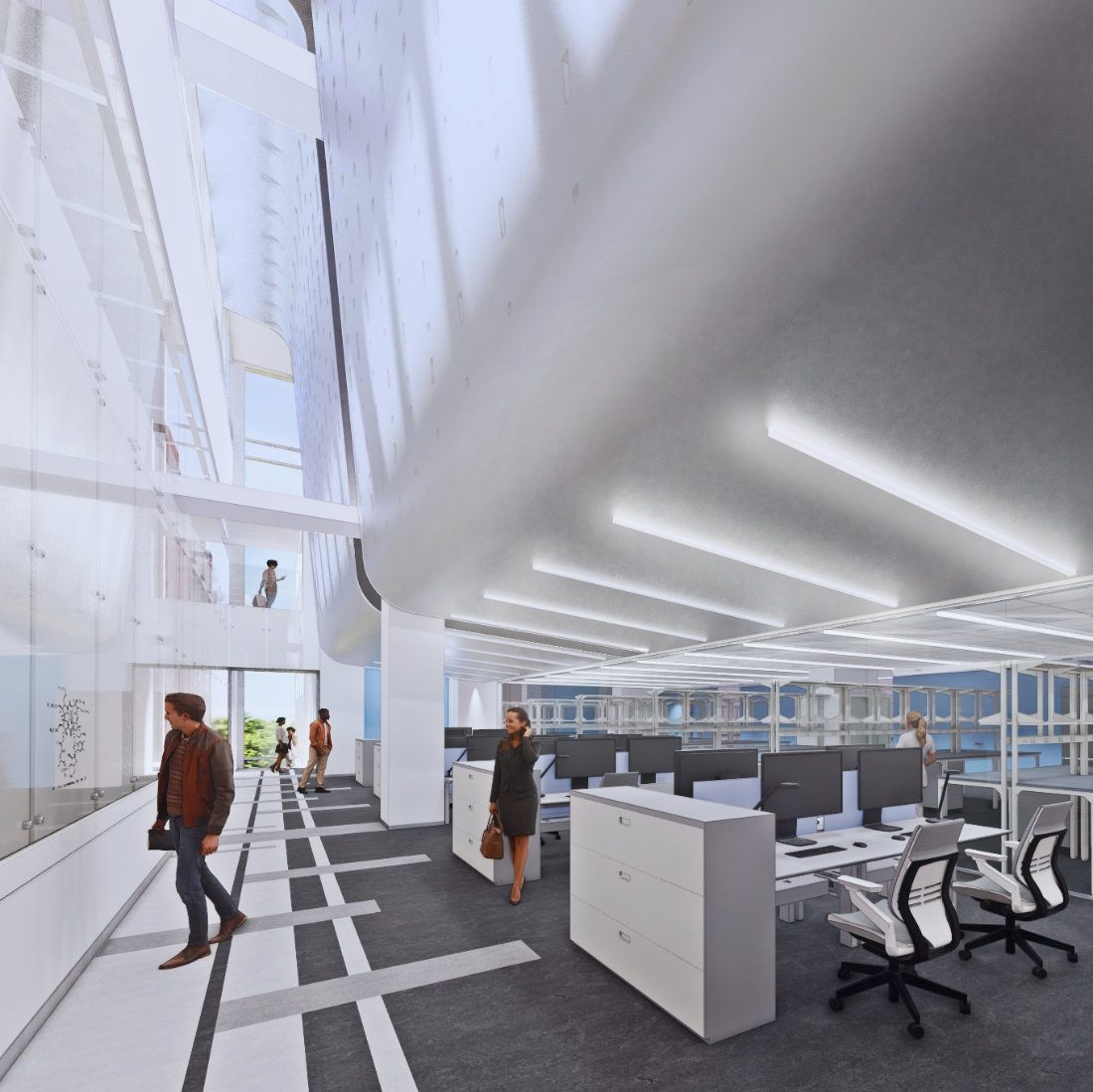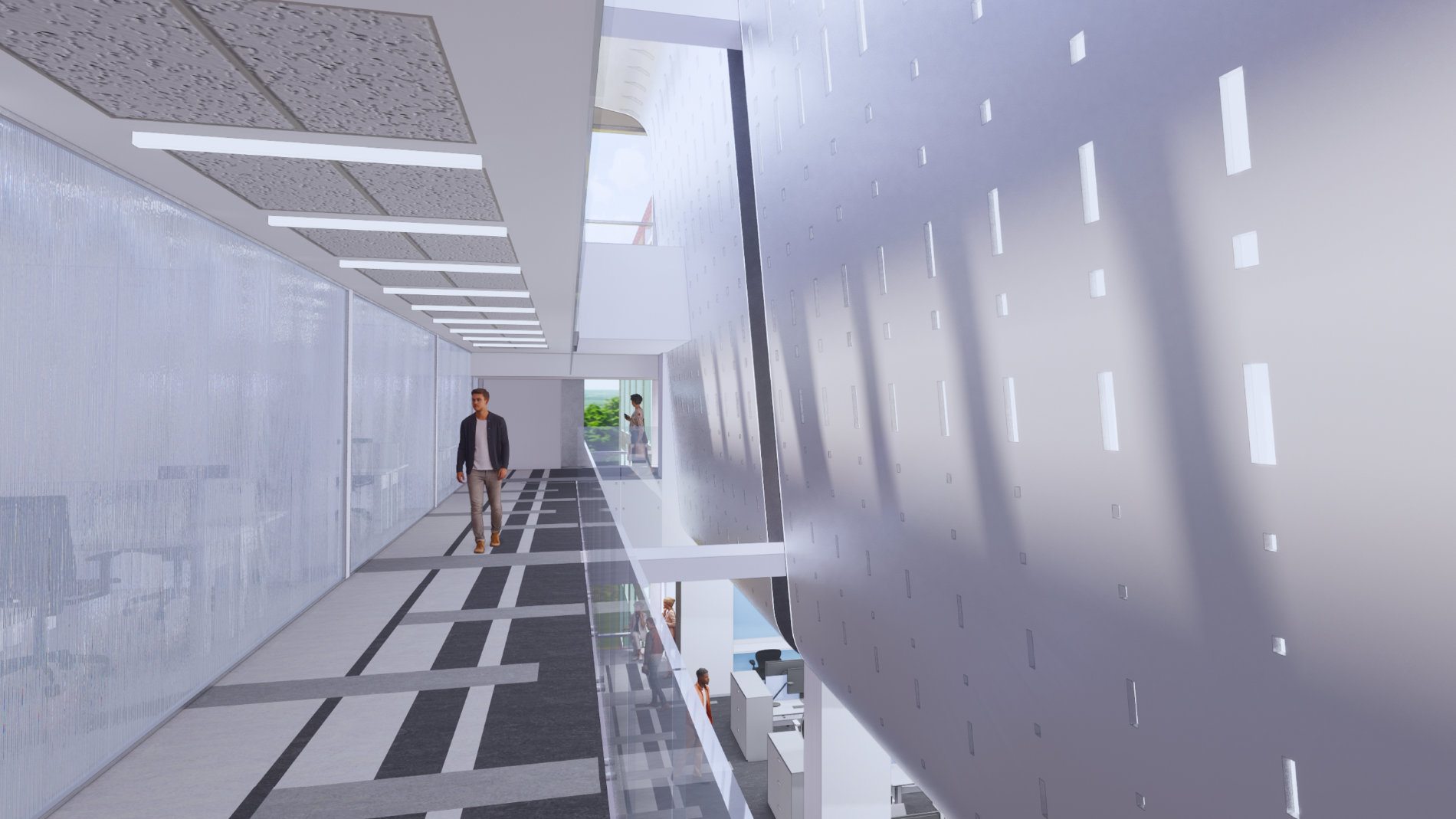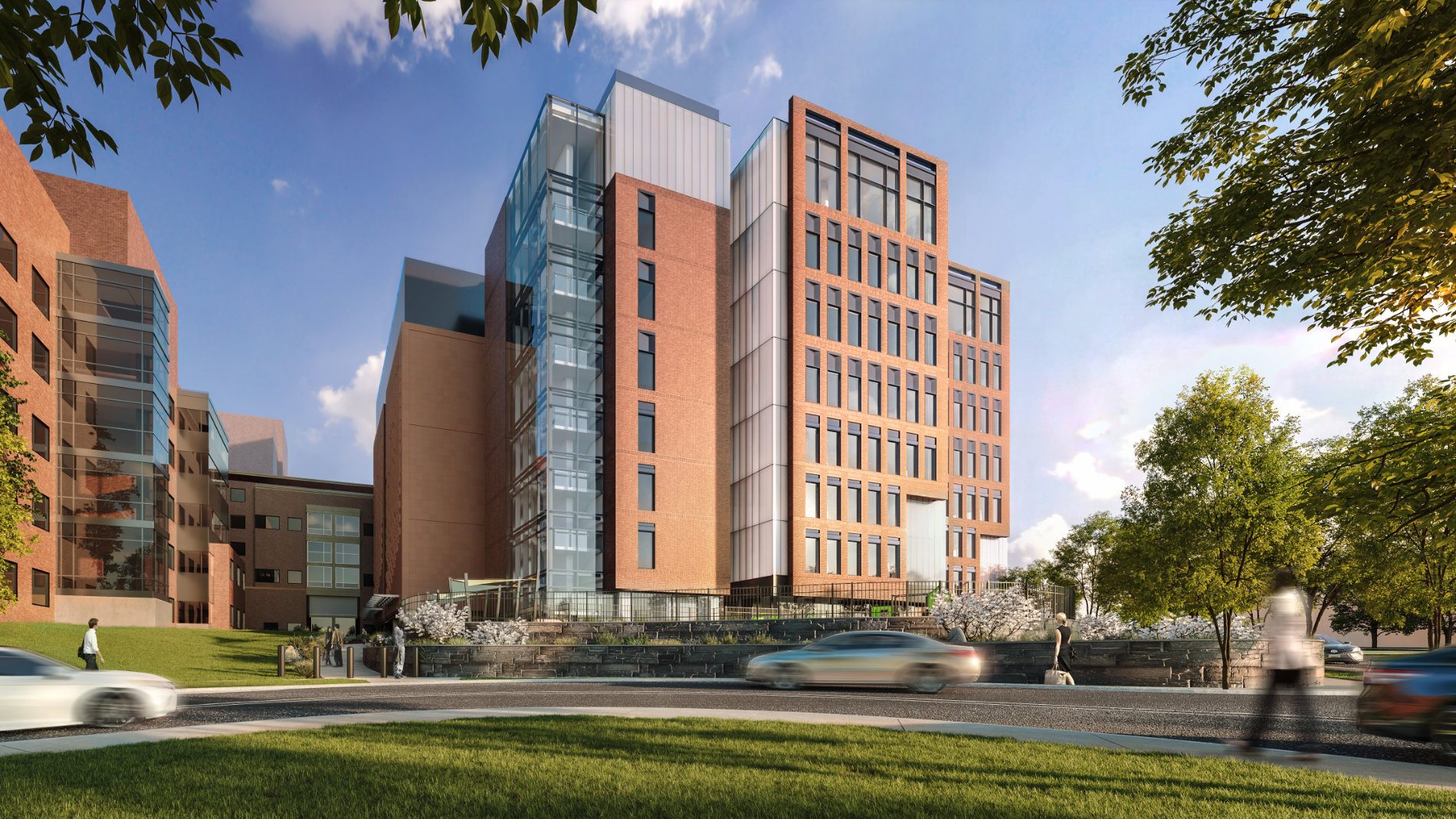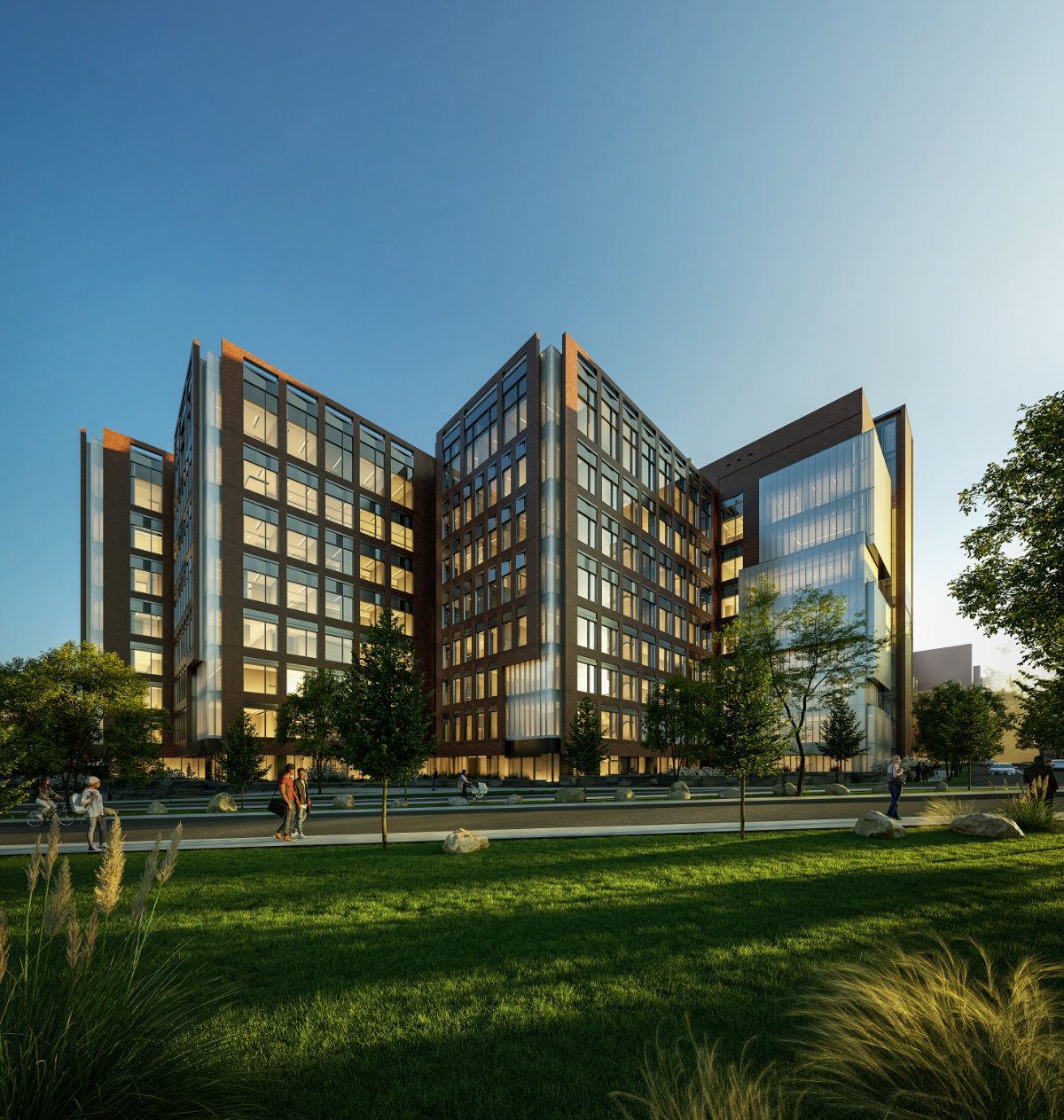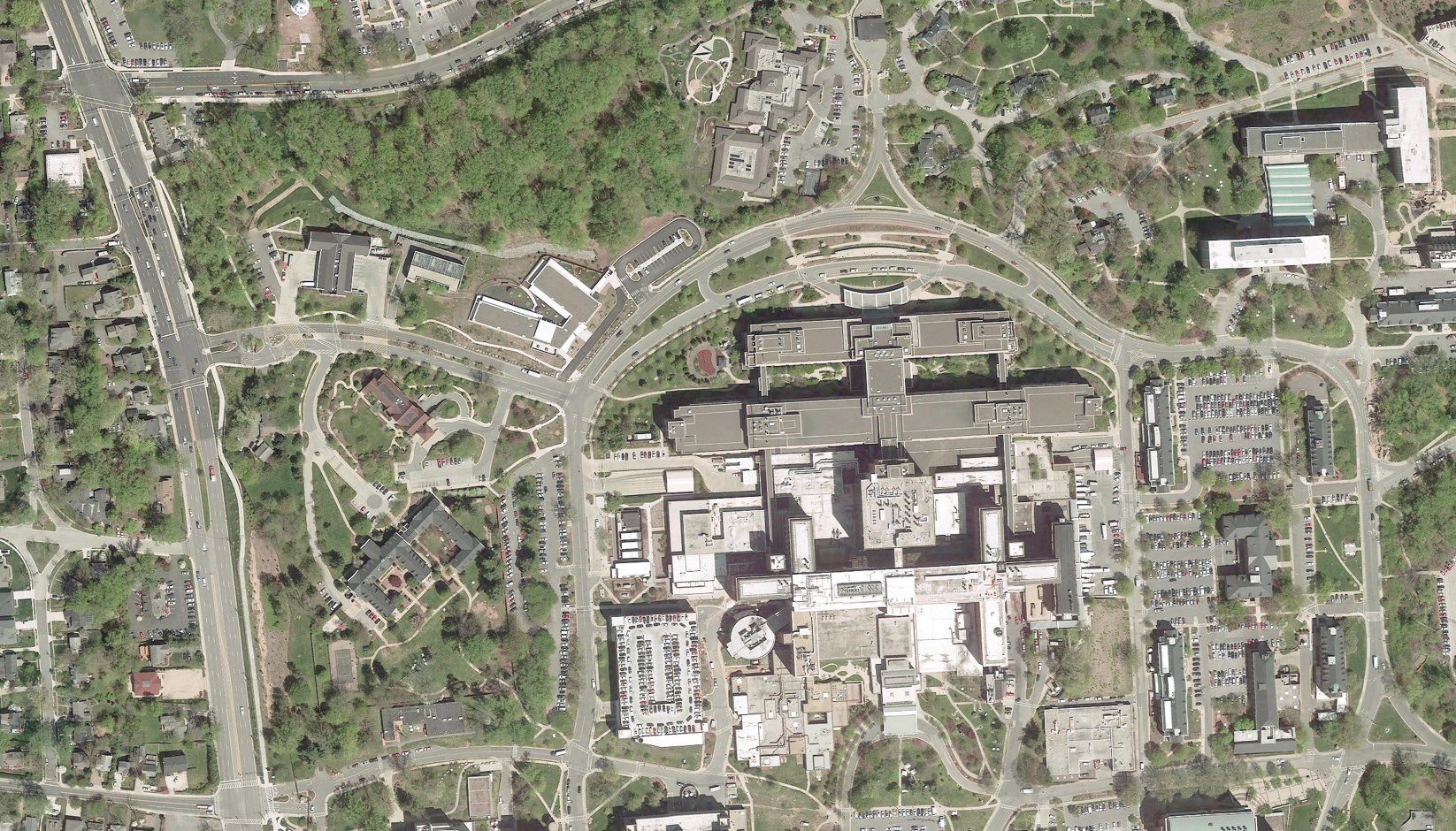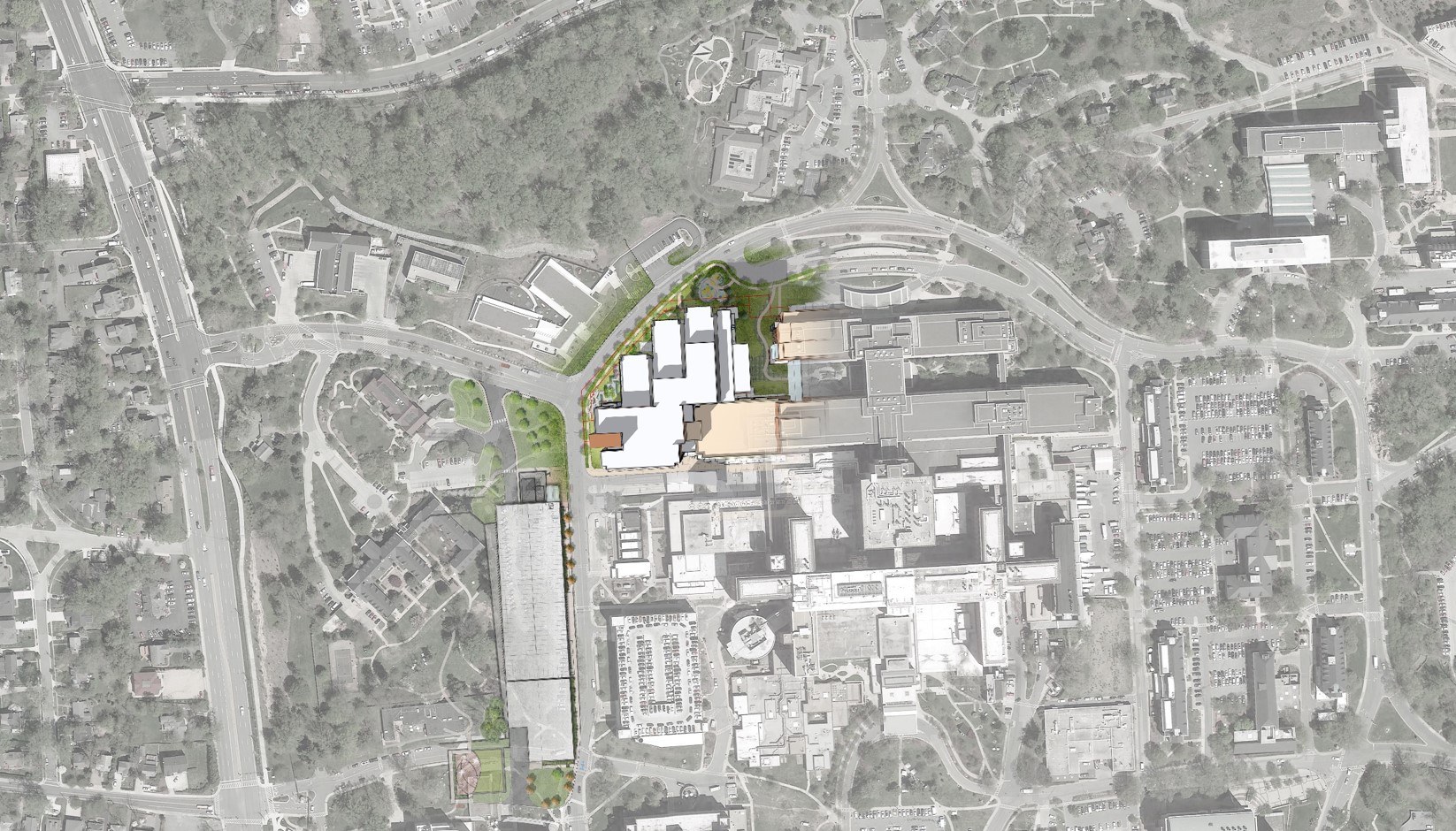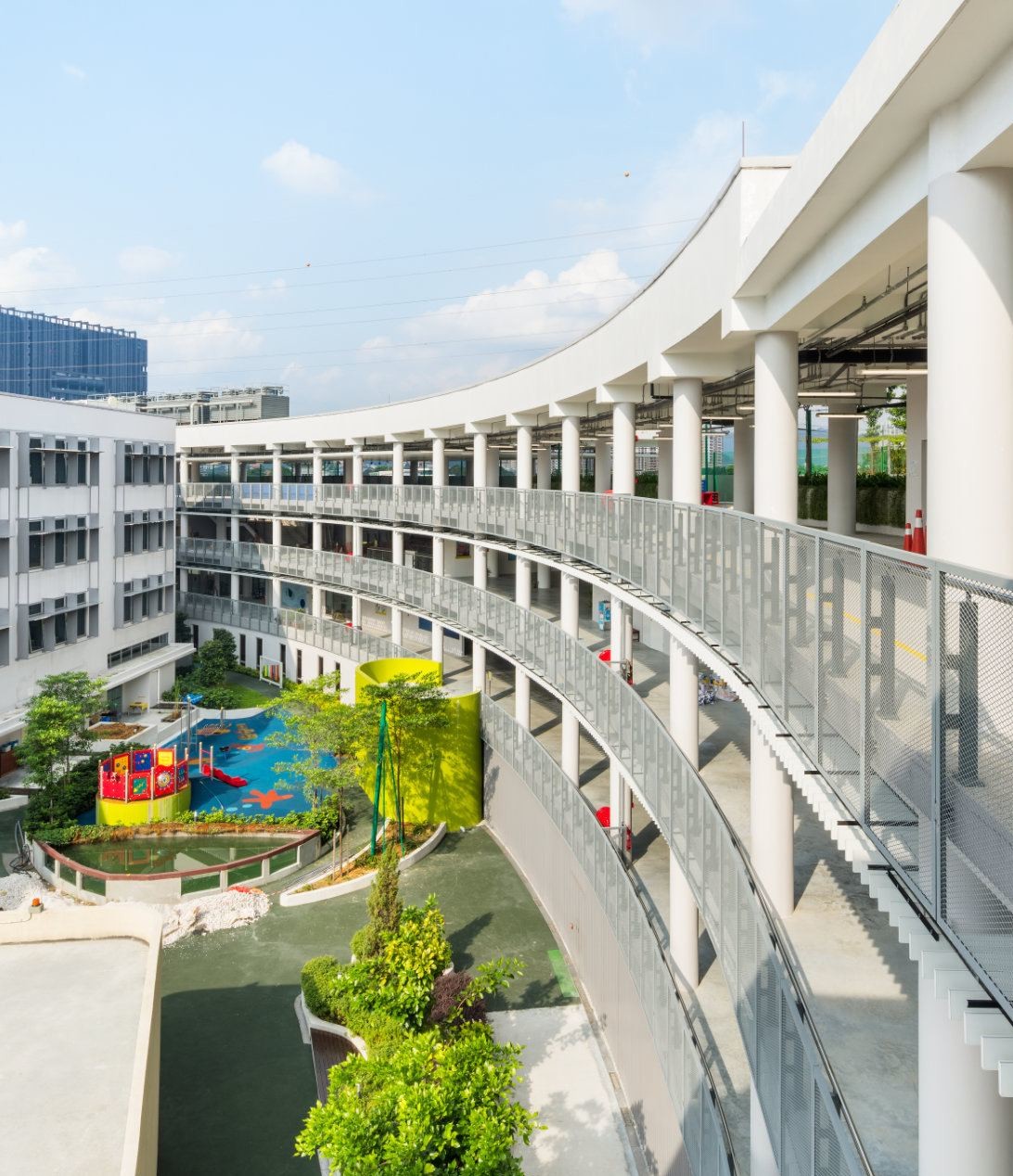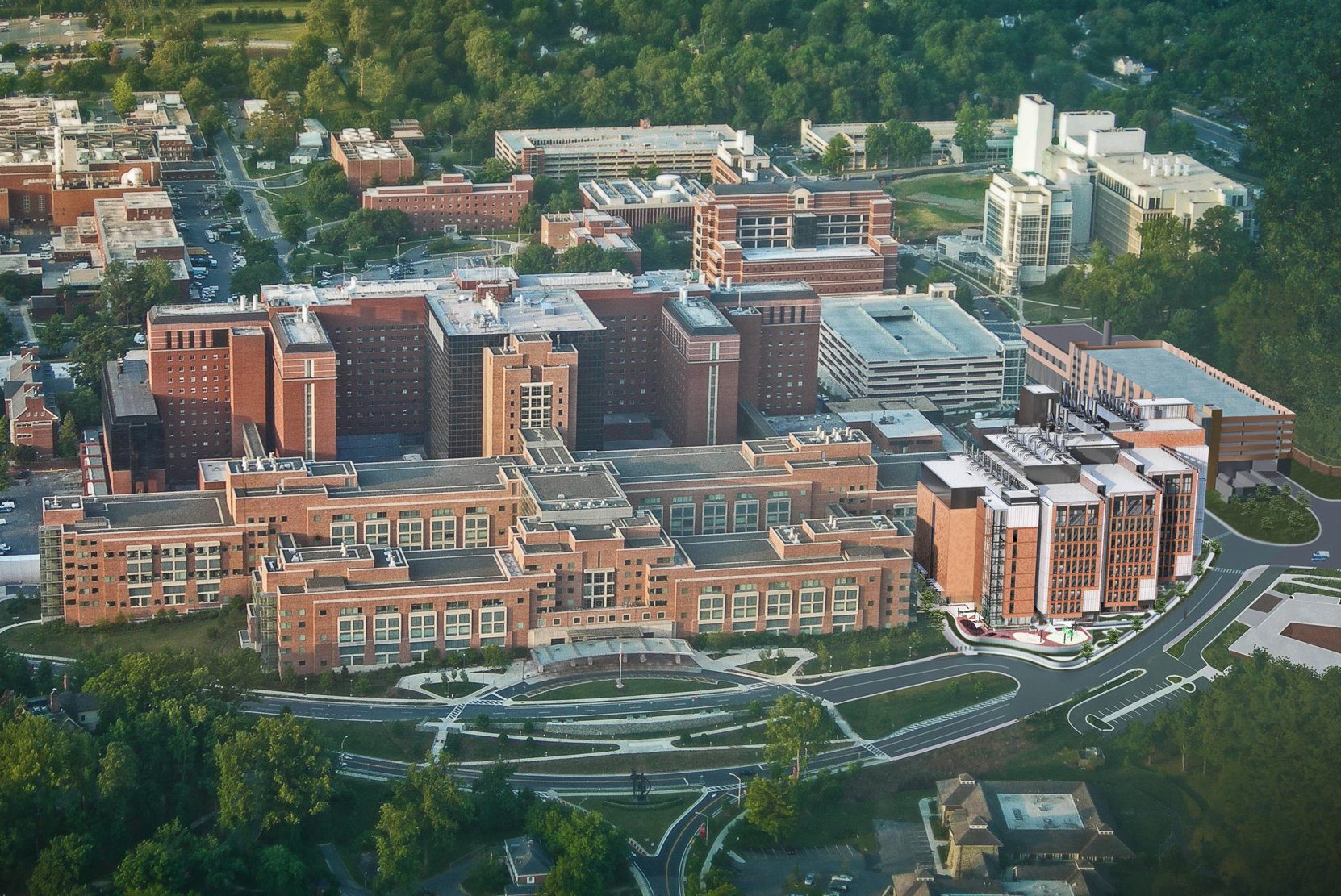
The NIH challenged HOK to design the SLRM to blend in with the rest of the Institute’s red brick campus and connect directly with the existing hospital for synergy of functions. It could not overshadow the main hospital building.
In addition to providing floors for advanced surgeries and research, the building needed to provide workspaces and conference areas where NIH doctors and scientists could collaborate across departments and disciplines.
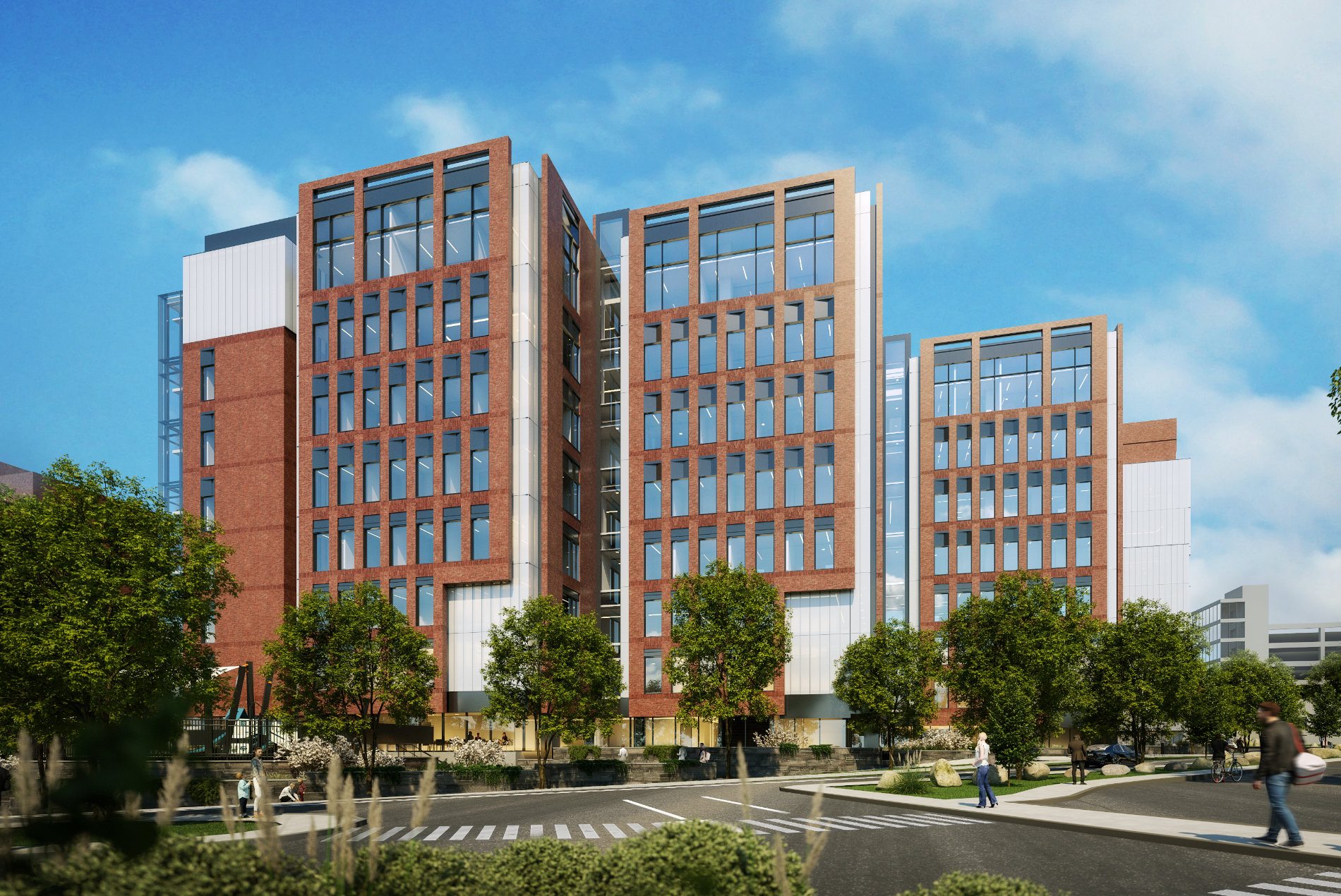
The design solution creates a building organized as three main wings extending off a main bar. The wings provide the SLRM with an abundance of corners to house offices and collaboration spaces. The multi-wing design also breaks down the massing of the eight-story building and allows lightwells between the wings to draw natural light deep into the floor plate. At ground level, the SRLM’s wings allow for a series of gardens and bioretention ponds that enhance the pedestrian experience.
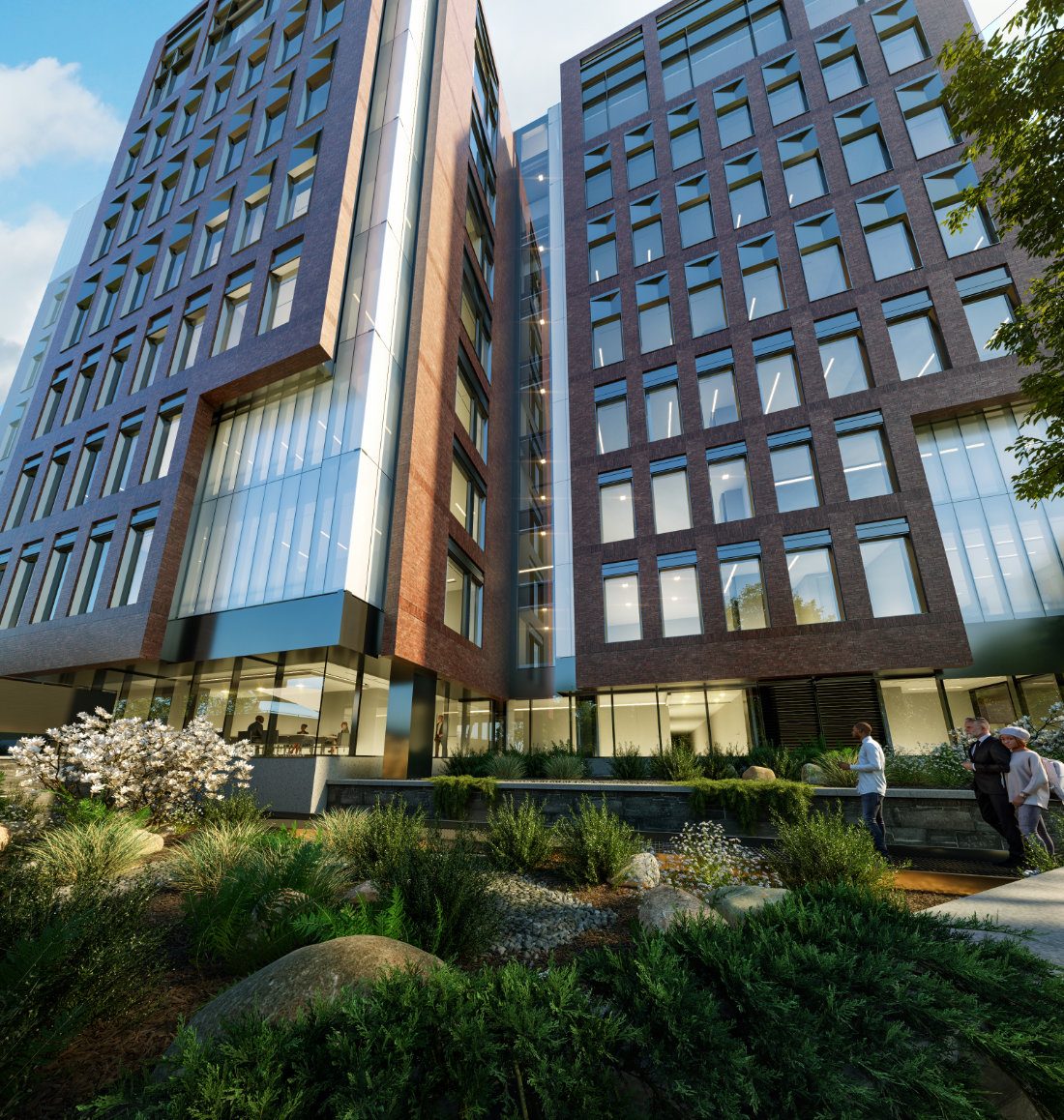
Research has shown that biophilic design—connecting people to nature—improves health and well-being. The SRLM connects building occupants to the outdoors in multiple ways.
Large windows provide occupants with restorative natural light and expansive views onto nature.
Corner gardens offer visitors, patients and places of comfort and reflection. The gardens double as bioretention gardens, harvesting stormwater from the building’s rooftop.
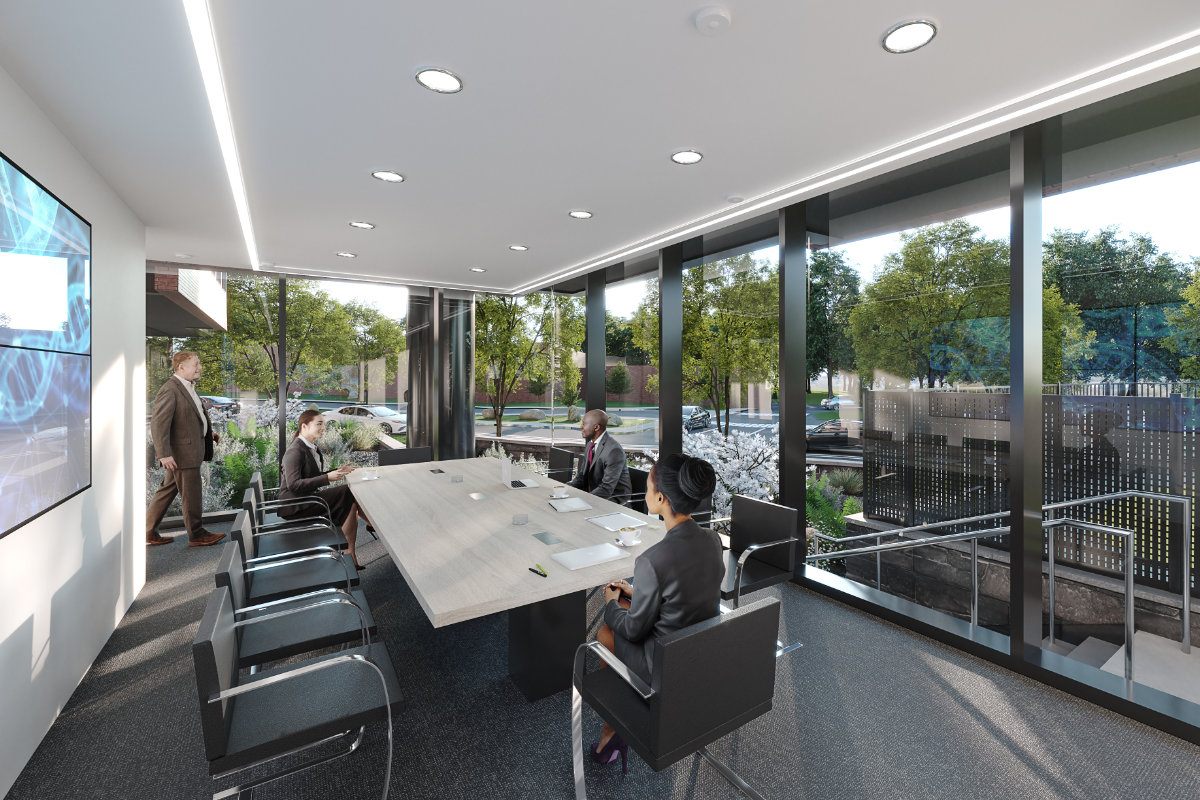
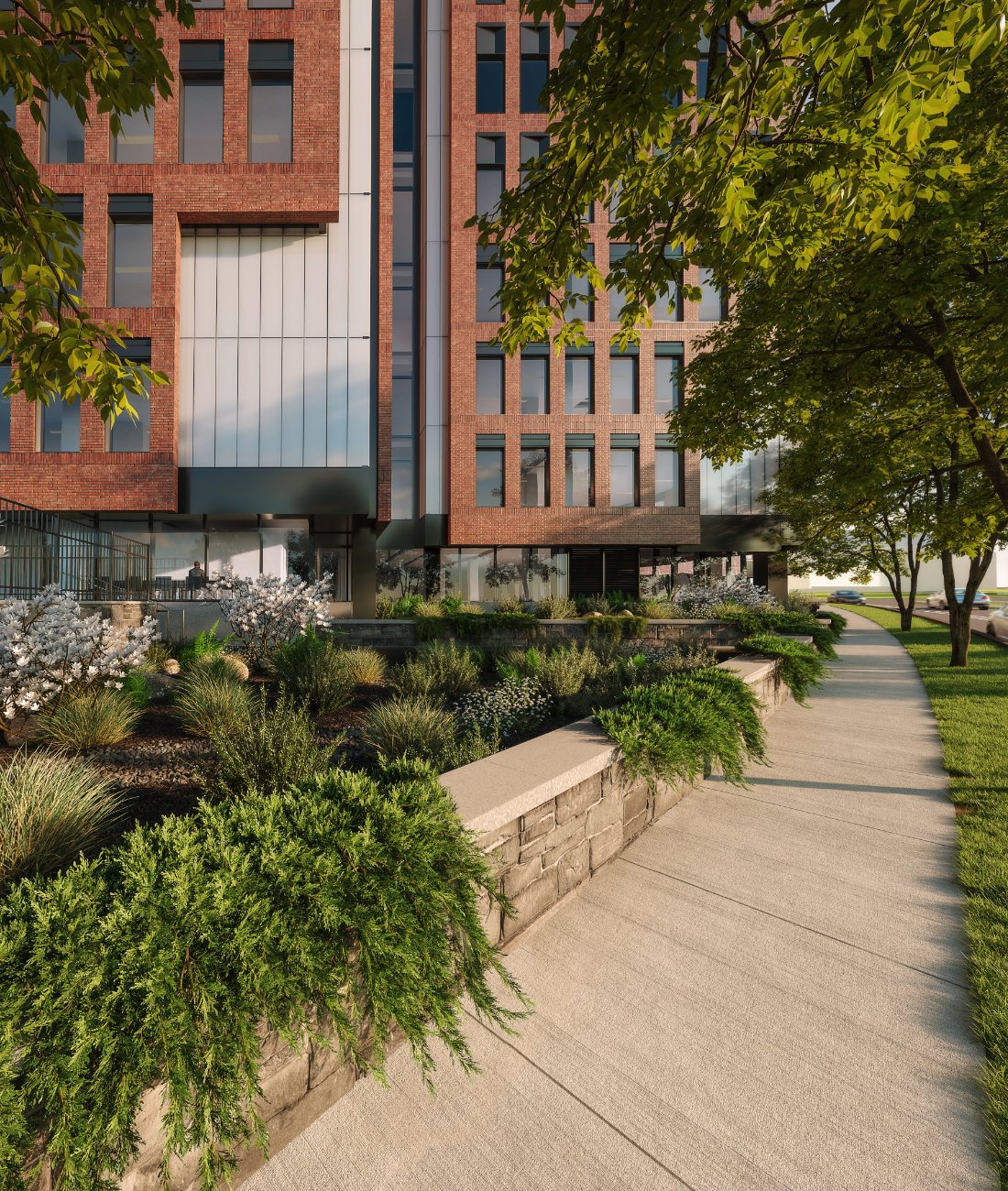
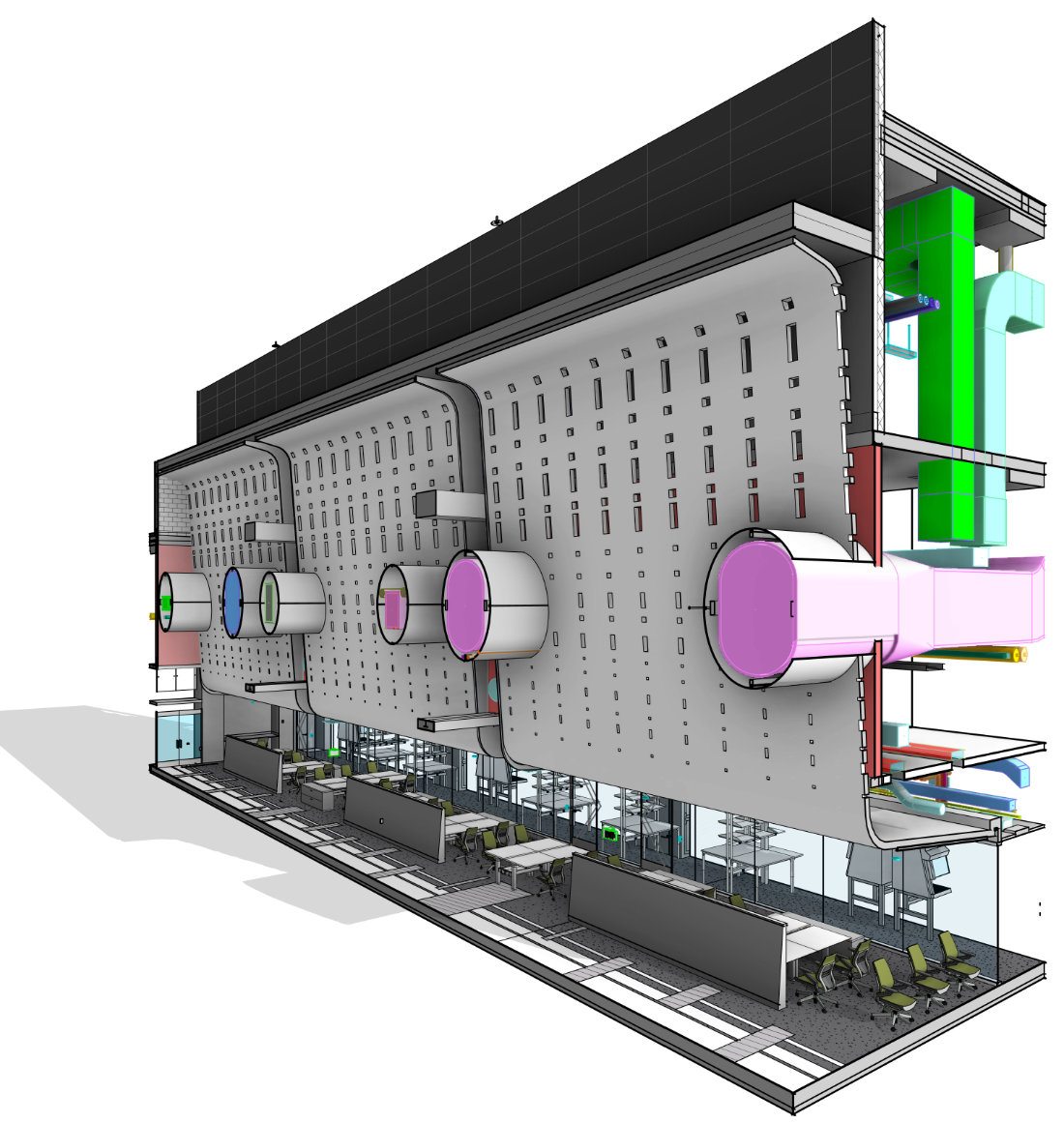
The SRLM will house the world’s most advanced clinical research technology.
HOK’s integrated team of architects, lab and medical planners, interior designers and engineers developed a design strategy to ensure the building’s infrastructure can support today’s equipment and adapt to future advancements in clinical research technology.
A 3D perspective (right) shows the SRLM’s 7th and 8th floors. Lightwells draw natural light into upper-level labs and workplaces. Mechanical systems housed above each clinical research floor support advanced technology.
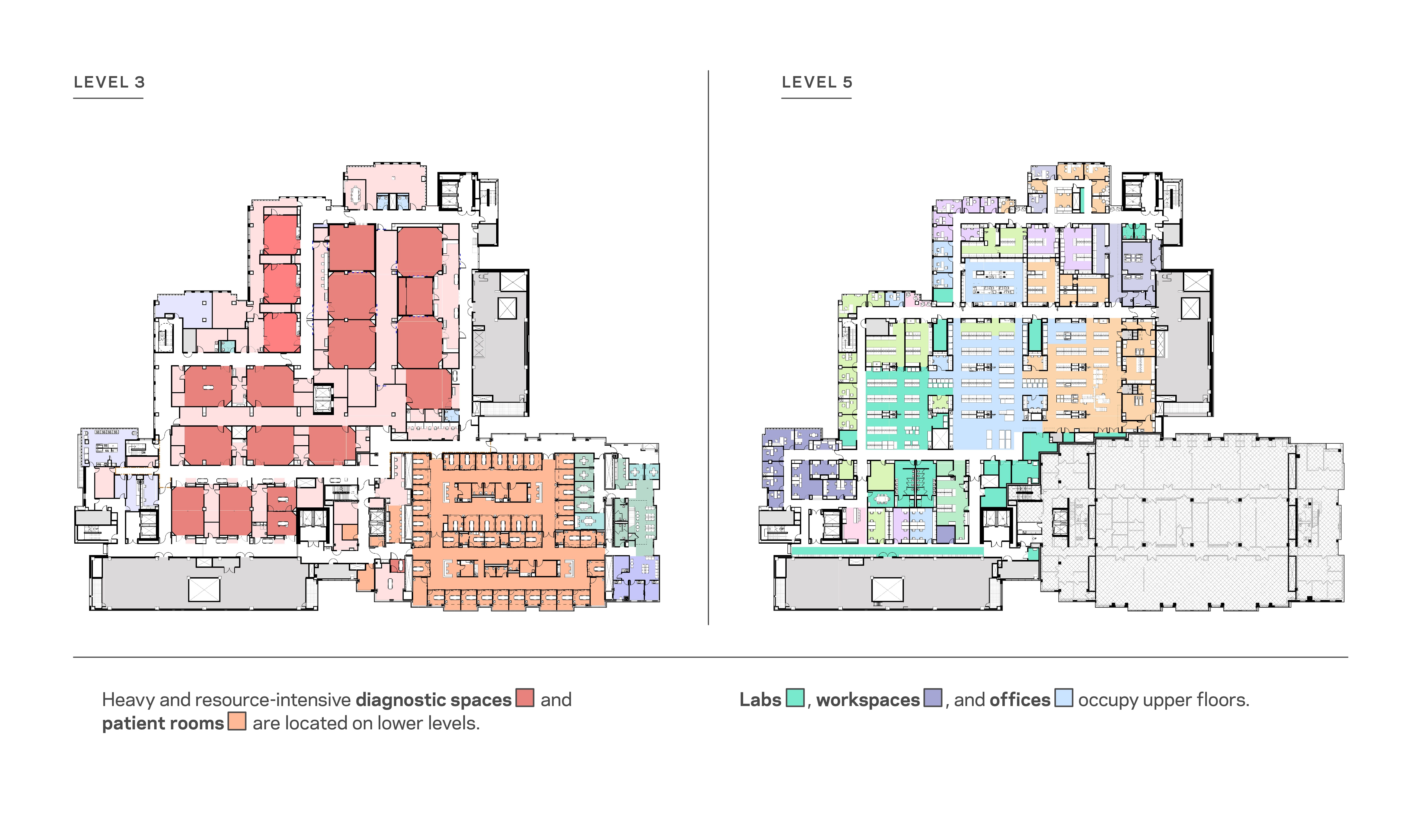
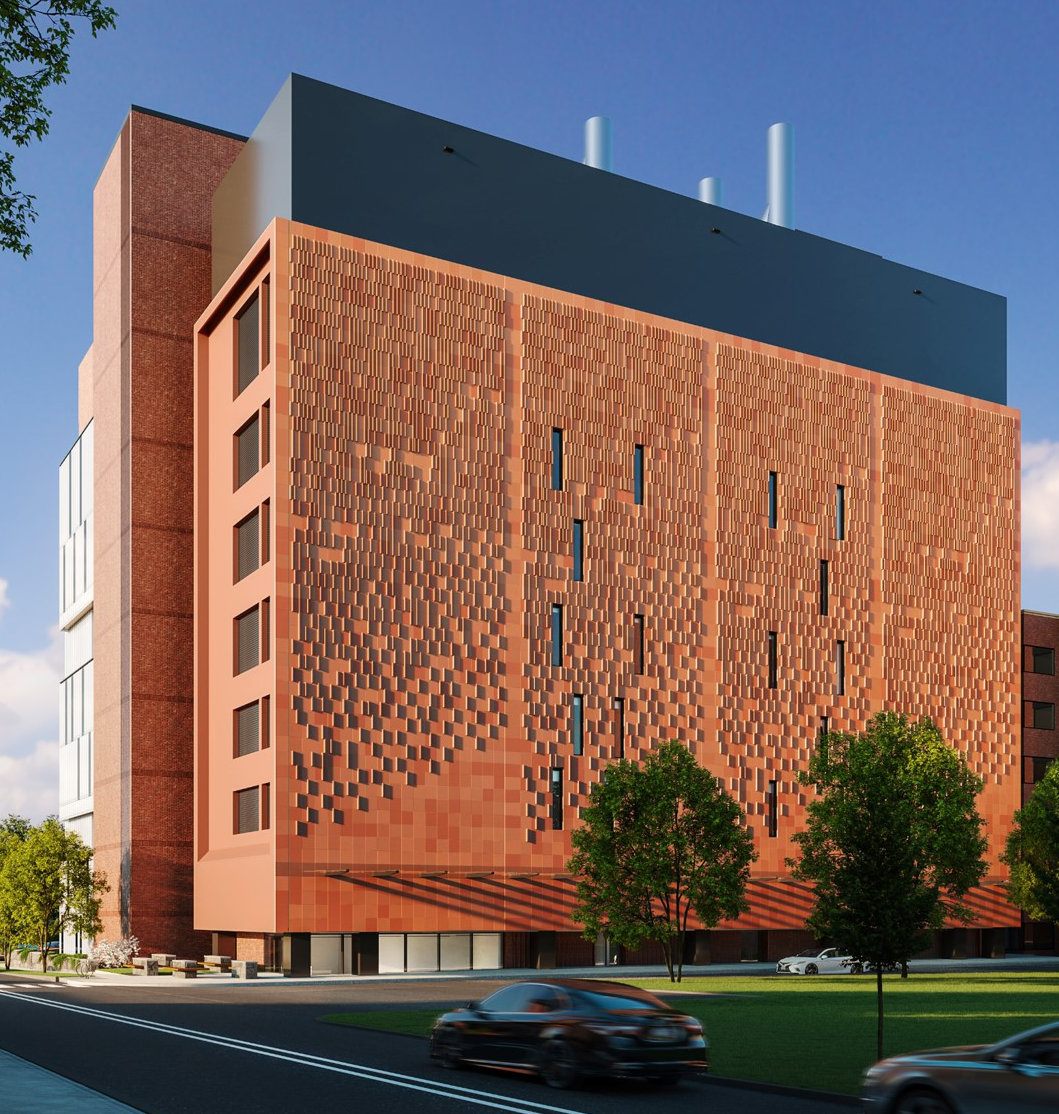
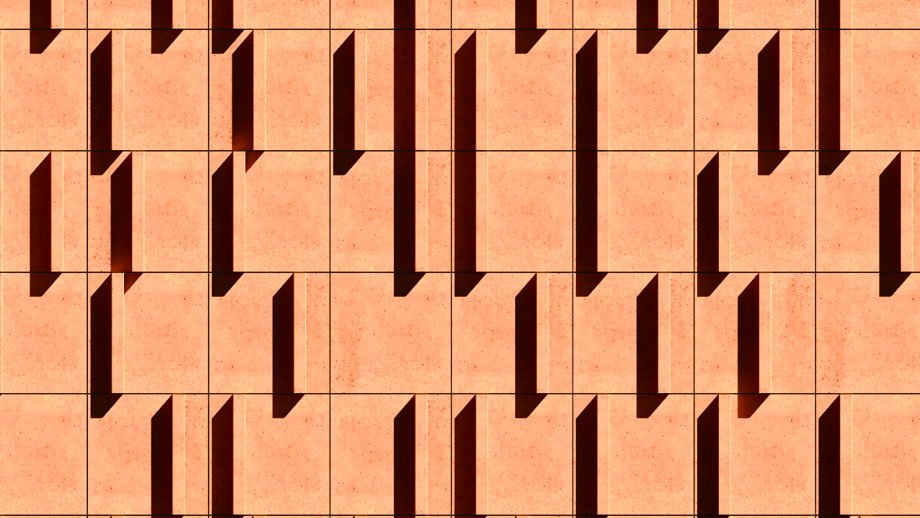
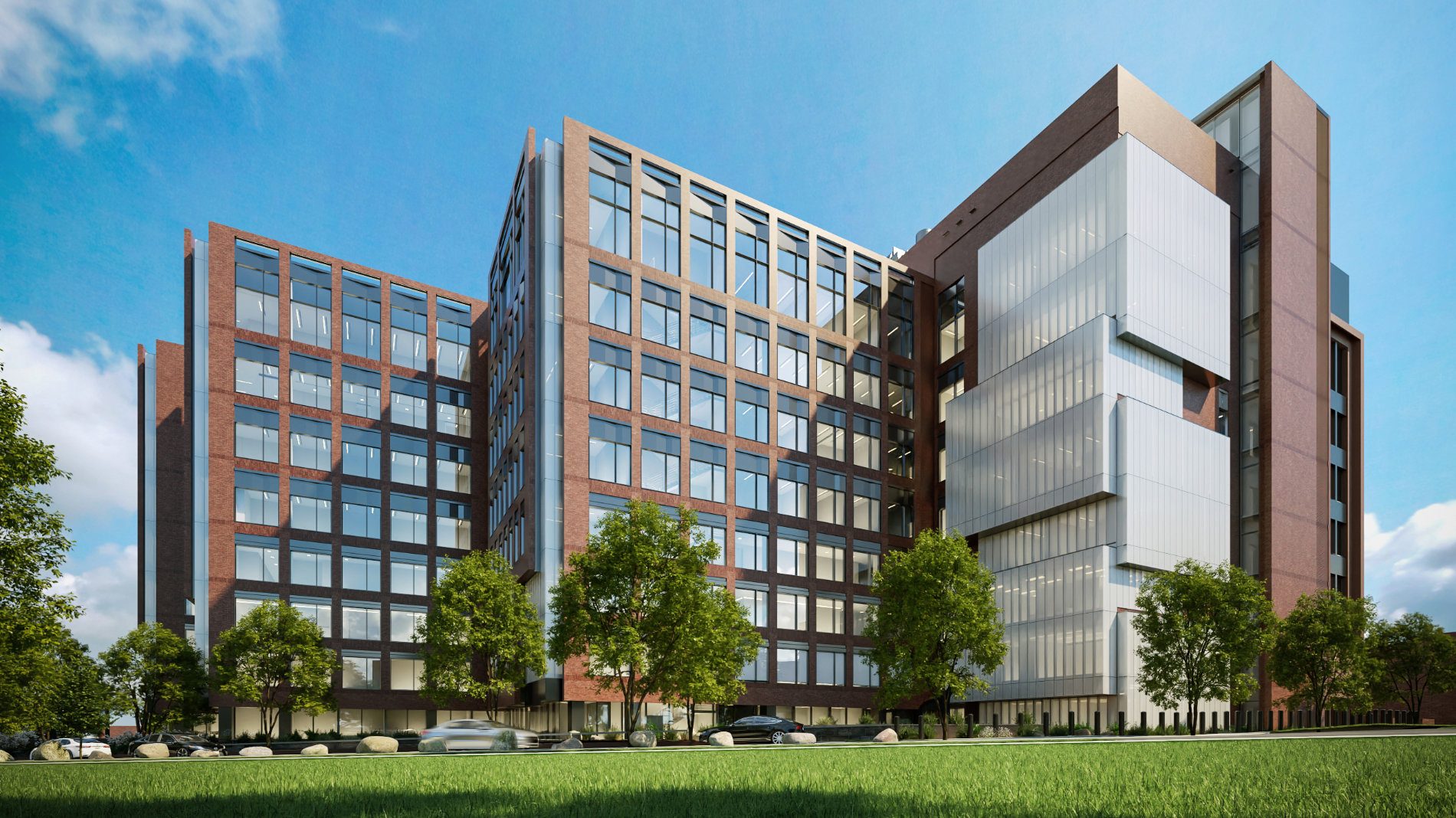
The SRLM places innovation and sustainability at the forefront. The abundant use of natural light and highly efficient mechanical systems have helped position the building to earn LEED v4 Gold certification.
Glowing glass cubes along the corners of the building hint at the innovative research and treatment occurring inside.
